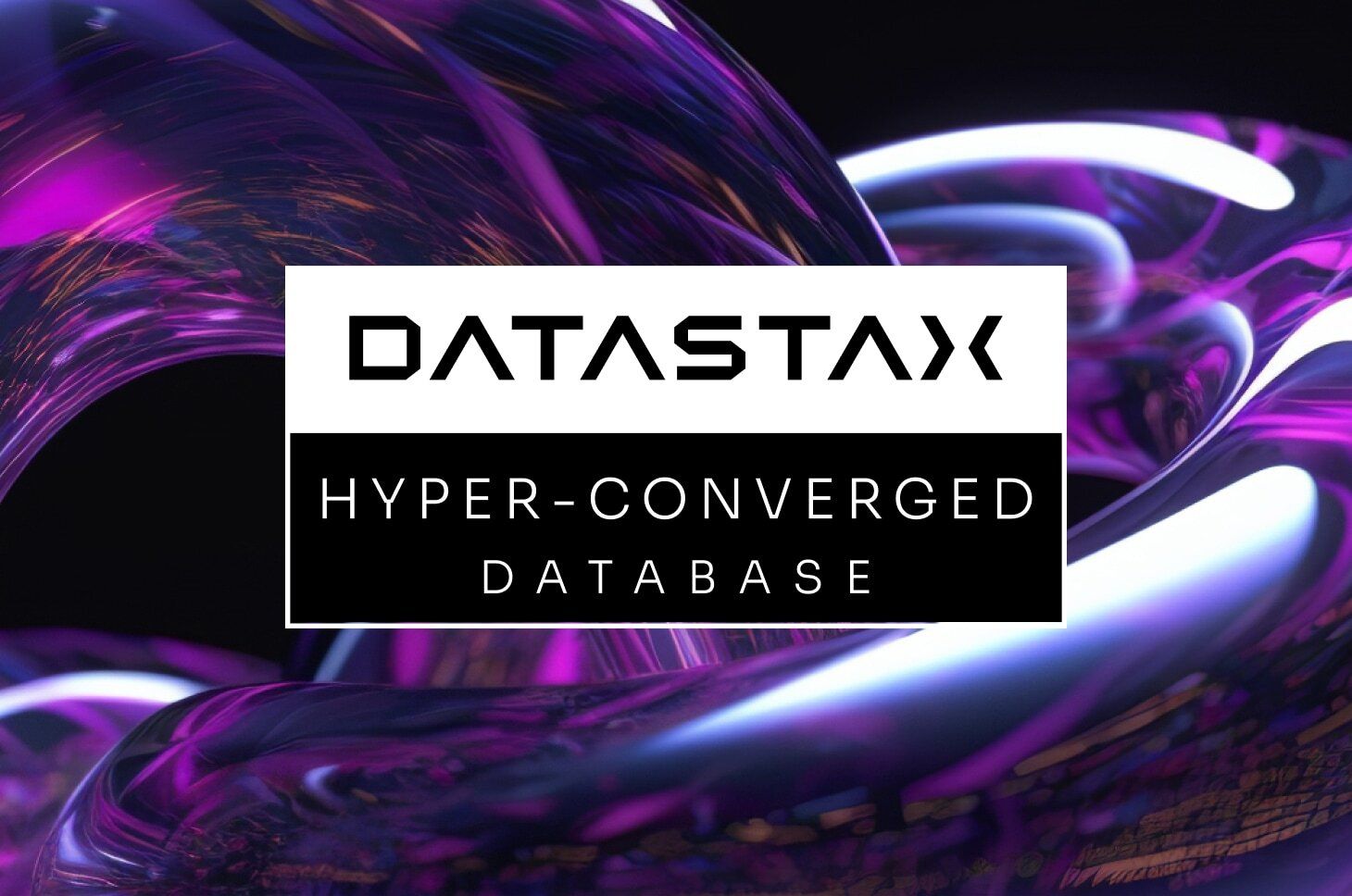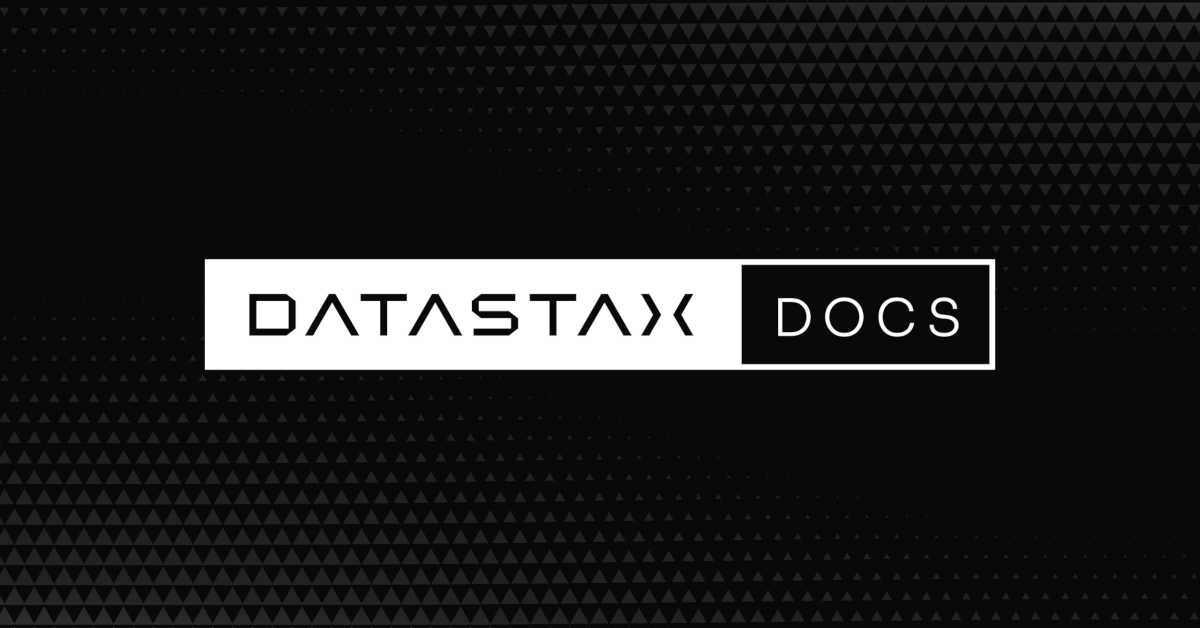The DataStax Kubernetes Operator for Apache Cassandra®
Getting Started
Quick start:
kubectl create -f https://raw.githubusercontent.com/datastax/cass-operator/master/docs/user/cass-operator-manifests.yaml
# *** This is for GKE -> Adjust based on your cloud or storage options
kubectl create -f https://raw.githubusercontent.com/datastax/cass-operator/master/operator/k8s-flavors/gke/storage.yaml
kubectl -n cass-operator create -f https://raw.githubusercontent.com/datastax/cass-operator/master/operator/example-cassdc-yaml/cassandra-3.11.6/example-cassdc-minimal.yamlLoading the operator
Installing the Cass Operator itself is straightforward. Apply the provided manifest as follows:
kubectl apply -f https://raw.githubusercontent.com/datastax/cass-operator/master/docs/user/cass-operator-manifests.yamlNote that since the manifest will install a Custom Resource Definition, the user running the above command will need cluster-admin privileges.
This will deploy the operator, along with any requisite resources such as Role, RoleBinding, etc., to the cass-operator namespace. You can check to see if the operator is ready as follows:
$ kubectl -n cass-operator get pods --selector name=cass-operator
NAME READY STATUS RESTARTS AGE
cass-operator-555577b9f8-zgx6j 1/1 Running 0 25hCreating a storage class
You will need to create an appropriate storage class which will define the type of storage to use for Cassandra nodes in a cluster. For example, here is a storage class for using SSDs in GKE, which you can also find at operator/deploy/k8s-flavors/gke/storage.yaml:
apiVersion: storage.k8s.io/v1
kind: StorageClass
metadata:
name: server-storage
provisioner: kubernetes.io/gce-pd
parameters:
type: pd-ssd
replication-type: none
volumeBindingMode: WaitForFirstConsumer
reclaimPolicy: DeleteApply the above as follows:
kubectl apply -f https://raw.githubusercontent.com/datastax/cass-operator/master/operator/k8s-flavors/gke/storage.yaml
Creating a CassandraDatacenter
The following resource defines a Cassandra 3.11.6 datacenter with 3 nodes on one rack, which you can also find at operator/example-cassdc-yaml/cassandra-3.11.6/example-cassdc-minimal.yaml:
apiVersion: cassandra.datastax.com/v1beta1
kind: CassandraDatacenter
metadata:
name: dc1
spec:
clusterName: cluster1
serverType: cassandra
serverVersion: 3.11.6
managementApiAuth:
insecure: {}
size: 3
storageConfig:
cassandraDataVolumeClaimSpec:
storageClassName: server-storage
accessModes:
- ReadWriteOnce
resources:
requests:
storage: 5Gi
config:
cassandra-yaml:
authenticator: org.apache.cassandra.auth.PasswordAuthenticator
authorizer: org.apache.cassandra.auth.CassandraAuthorizer
role_manager: org.apache.cassandra.auth.CassandraRoleManager
jvm-options:
initial_heap_size: 800M
max_heap_size: 800MApply the above as follows:
kubectl -n cass-operator apply -f https://raw.githubusercontent.com/datastax/cass-operator/master/operator/example-cassdc-yaml/cassandra-3.11.6/example-cassdc-minimal.yamlYou can check the status of pods in the Cassandra cluster as follows:
$ kubectl -n cass-operator get pods --selector cassandra.datastax.com/cluster=cluster1
NAME READY STATUS RESTARTS AGE
cluster1-dc1-default-sts-0 2/2 Running 0 26h
cluster1-dc1-default-sts-1 2/2 Running 0 26h
cluster1-dc1-default-sts-2 2/2 Running 0 26hYou can check to see the current progress of bringing the Cassandra datacenter online by checking the cassandraOperatorProgress field of the CassandraDatacenter's status sub-resource as follows:
$ kubectl -n cass-operator get cassdc/dc1 -o "jsonpath={.status.cassandraOperatorProgress}"
Ready(cassdc and cassdcs are supported short forms of CassandraDatacenter.)
A value of "Ready", as above, means the operator has finished setting up the Cassandra datacenter.
You can also check the Cassandra cluster status using nodetool by invoking it on one of the pods in the Cluster as follows:
$ kubectl -n cass-operator exec -it -c cassandra cluster1-dc1-default-sts-0 -- nodetool status
Datacenter: dc1
===============
Status=Up/Down
|/ State=Normal/Leaving/Joining/Moving/Stopped
-- Address Load Tokens Owns (effective) Host ID Rack
UN 10.233.105.125 224.82 KiB 1 65.4% 5e29b4c9-aa69-4d53-97f9-a3e26115e625 r1
UN 10.233.92.96 186.48 KiB 1 61.6% b119eae5-2ff4-4b06-b20b-c492474e59a6 r1
UN 10.233.90.54 205.1 KiB 1 73.1% 0a96e814-dcf6-48b9-a2ca-663686c8a495 r1Features
- Proper token ring initialization, with only one node bootstrapping at a time
- Seed node management - one per rack, or three per datacenter, whichever is more
- Server configuration integrated into the CassandraDatacenter CRD
- Rolling reboot nodes by changing the CRD
- Store data in a rack-safe way - one replica per cloud AZ
- Scale up racks evenly with new nodes
- Replace dead/unrecoverable nodes
- Multi DC clusters (limited to one Kubernetes namespace)
All features are documented in the User Documentation.
Containers
The operator is comprised of the following container images working in concert:
- The operator, built from sources in the operator directory.
- The config builder init container, built from sources in datastax/cass-config-builder.
- Cassandra, built from datastax/management-api-for-apache-cassandra, with Cassandra 3.11.6 support, and experimental support for Cassandra 4.0.0-alpha3.
- ... or DSE, built from datastax/docker-images.
Requirements
- Kubernetes cluster, 1.12 or newer.
- Users who want to use a Kubernetes version from before 1.15 can use a manifest that supports x-preserve-unknown-fields on the CassandraDatacenter CRD - manifest
Contributing
As of version 1.0, Cass Operator is maintained by a team at DataStax and it is part of what powers DataStax Astra. We would love for open source users to contribute bug reports, documentation updates, tests, and features.
Developer setup
Almost every build, test, or development task requires the following pre-requisites...
- Golang 1.13
- Docker, either the docker.io packages on Ubuntu, Docker Desktop for Mac, or your preferred docker distribution.
- mage: There are some tips for using mage in docs/developer/mage.md
Building
The operator uses mage for its build process.
Build the Operator Container Image
This build task will create the operator container image, building or rebuilding the binary from golang sources if necessary:
mage operator:buildDockerBuild the Operator Binary
If you wish to perform ONLY to the golang build or rebuild, without creating a container image:
mage operator:buildGoTesting
mage operator:testGoEnd-to-end Automated Testing
Run fully automated end-to-end tests...
mage integ:runDocs about testing are here. These work against any k8s cluster with six or more worker nodes.
Manual Local Testing
There are a number of ways to run the operator, see the following docs for more information:
- kind: Kubernetes in Docker is the recommended Kubernetes distribution for use by software engineers working on the operator. KIND can simulate a k8s cluster with multiple worker nodes on a single physical machine, though it's necessary to dial down the database memory requests.
The user documentation also contains information on spinning up your first operator instance that is useful regardless of what Kubernetes distribution you're using to do so.
Not (Yet) Supported Features
- Cassandra:
- Integrated data repair solution
- Integrated backup and restore solution
- DSE:
- Advanced Workloads, like Search / Graph / Analytics
Uninstall
This will destroy all of your data!
Delete your CassandraDatacenters first, otherwise Kubernetes will block deletion because we use a finalizer.
kubectl delete cassdcs --all-namespaces
Remove the operator Deployment, CRD, etc.
kubectl delete -f https://raw.githubusercontent.com/datastax/cass-operator/master/docs/user/cass-operator-manifests.yaml
Contacts
For developement questions, please reach out on Gitter, or by opening an issue on GitHub.
For usage questions, please visit our Community Forums: https://community.datastax.com
License
Copyright DataStax, Inc.
Licensed under the Apache License, Version 2.0 (the "License"); you may not use this file except in compliance with the License. You may obtain a copy of the License at
http://www.apache.org/licenses/LICENSE-2.0
Unless required by applicable law or agreed to in writing, software distributed under the License is distributed on an "AS IS" BASIS, WITHOUT WARRANTIES OR CONDITIONS OF ANY KIND, either express or implied. See the License for the specific language governing permissions and limitations under the License.








